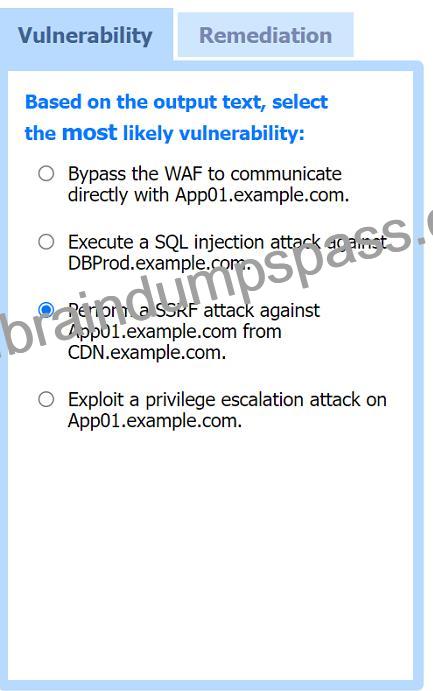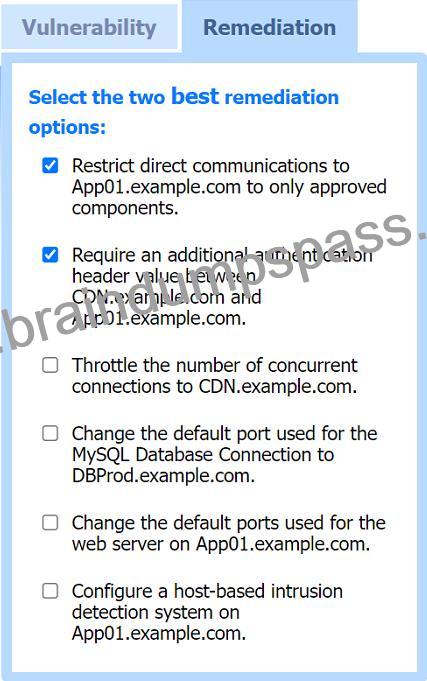See the explanation part for detailed solution
Explanation:


Most likely vulnerability: Perform a SSRF attack against App01.example.com from CDN.example.com.
Two best remediation options:
Restrict direct communications to App01.example.com to only approved components.
Require an additional authentication header value between CDN.example.com and App01.example.com.
Restrict direct communications to App01.example.com to only approved components: This limits the exposure of the application server by ensuring that only specified, trusted entities can communicate with it.
Require an additional authentication header value between CDN.example.com and App01.example.com: Adding an authentication layer between the CDN and the app server helps ensure that requests are legitimate and originate from trusted sources, mitigating SSRF and other indirect attack vectors.
Nmap Scan Observations:
CDN/WAF shows open ports for HTTP and HTTPS but filtered for MySQL, indicating it acts as a filtering layer.
App Server has open ports for HTTP, HTTPS, and filtered for MySQL.
DB Server has all ports filtered, typical for a database server that should not be directly accessible.
These findings align with the SSRF vulnerability and the appropriate remediation steps to enhance the security of internal communications.
![]()


Recent Comments